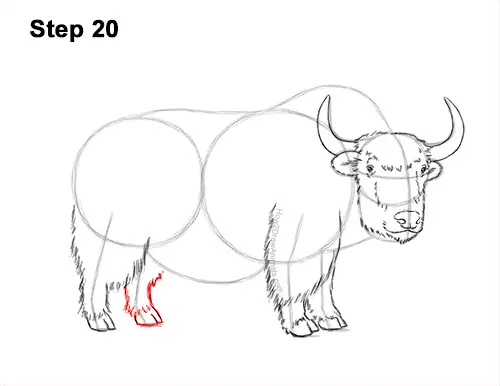
Step 20: Draw the shape of the other hind leg around the last line under the body. Most of this leg will be behind the yak's body, so only draw the visible lower portion and hoof.
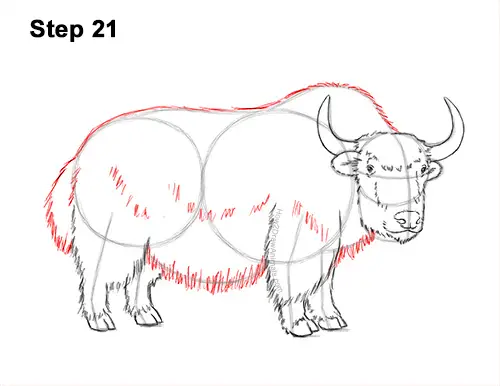
Step 21: Use the remaining lines and shapes as guides to draw the rest of the yak's body. Darken the outer edges of the initial guides using short strokes to create the furry shape of the body. Use short strokes for the fuzzy hump and just darken the initial guide line for the rest of the back. Use longer strokes along the bottom for the longer, shaggier fur found there. Yaks can have very long fur, so you can use strokes that are as long as the legs for the fur on the underside of the body. On the left side, draw a curved line that's made up of short strokes for the yak's big, shaggy tail. Add a series of short strokes within the body for extra detail on the fur.
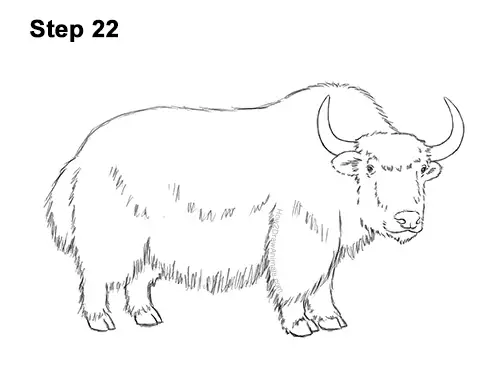
Step 22: For a cleaner look, erase as much as you can of the initial guide lines. Don't worry about erasing all of the guides. It's okay to leave some behind. Re-draw any final sketch lines you may have accidentally erased.
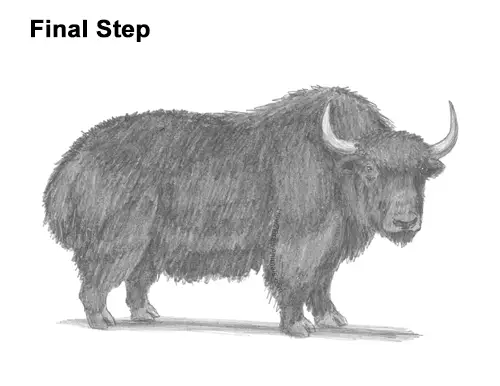
Final Step: Add some shading to your drawing for extra detail. Wild yaks don't have a coat pattern, so just use a medium to dark value all over the body. For a domestic yak, use a light value on the body and then add random patches of dark value for the coat pattern. Use a dark value for shadows and areas around the eye and nose. Use a slightly lighter value on other areas like the muzzle. Vary the pressure on your pencil to get different degrees of tonal value. For a more detailed guide on how to shade, check out this tutorial: How to shade.
Use a light value for the yak's horns. Then add a dark value at the bottom for shadows. Add the value lightly at first and gradually increase the darkness to a level that you like. As you shade the body, use strokes that go in the general direction of the fur. Shading can be time-consuming, so be patient and take breaks. It's a good idea to use reference as you draw for an accurate depiction of a yak. Don't forget to pause the video to draw at your own pace.
Add a cast shadow underneath. This helps to ground the yak so it doesn't appear to be floating.
Thanks for visiting! Subscribe to the How2DrawAnimals YouTube Channel for a new tutorial every week.
To learn how to draw popular cartoon characters, visit EasyDrawingTutorials.com.
RELATED TUTORIALS
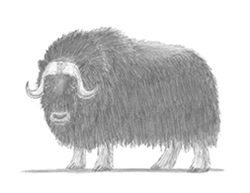 |
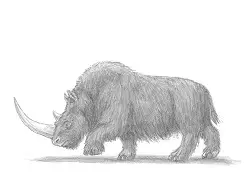 |
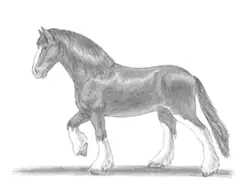 |







